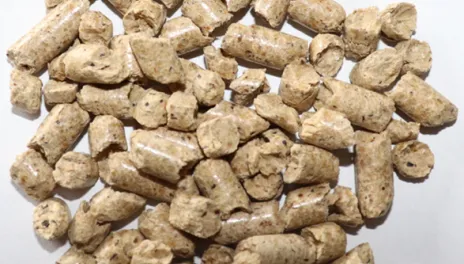Soybean hulls as a nitrogen source for crops?
Three new soybean crushing plants are expected to open in North Dakota in the next few years with large quantities of soybean crushing by-products soon to be generated.
It is likely that substantial quantities of those soybean by-products would occasionally become available at a greatly reduced price, and soybean hulls is one of the cheaper less-desirable by-products of soybean crushing. For this reason, in the growing season of 2023 we conducted a study at the CREC to test the potential utility of soybean hulls as a source of nitrogen fertilizer on three sites: a dryland site managed with conventional tillage, a dryland long-term no-till site, and an irrigated site with conventional tillage. Spring wheat was used for this evaluation.
The following treatments were applied:
- Check, no nitrogen
- 40 lbs N applied as urea
- 40 lbs N from soybean hulls
- Optimum N rate from a mix of 40 lbs N from soybean hulls + urea
- Optimum N rate from urea only
The optimum nitrogen rate was set at 90 lbs nitrogen per acre for all three sites, which was within the recommended range for all of them. To determine nitrogen content of the soybean hulls, a sample was submitted for chemical analysis; the following results were obtained. (Table 1).
| N% | P% | K% | S% | Carbon % | C/N ratio |
| 2.3 | 0.13 | 1.4 | 0.12 | 44.4 | 19.3 |
Results
Only two sites showed crop nitrogen response: the conventional dryland and the no-till dryland. There was no yield or grain protein response to the application of soybean hulls at any of the sites. Even though the hulls applied contained the equivalent of 40 lbs nitrogen per acre, it was not made available to the plants in that year. The carbon to nitrogen ratio was likely too high for the hulls to release enough nutrients to make a positive impact. There was no negative impact of soybean hulls either, indicating that the soybean hulls did not tie up nutrients in any substantial amount. We will plant spring wheat back on two of the sites to see if there is any residual effect from the breakdown of the soybean hulls in the next season.
This study was funded by the North Dakota Soybean Council.
Szilvia Yuja
Szilvia.ZilahiSebess@ndsu.edu
Soils Research Specialist
